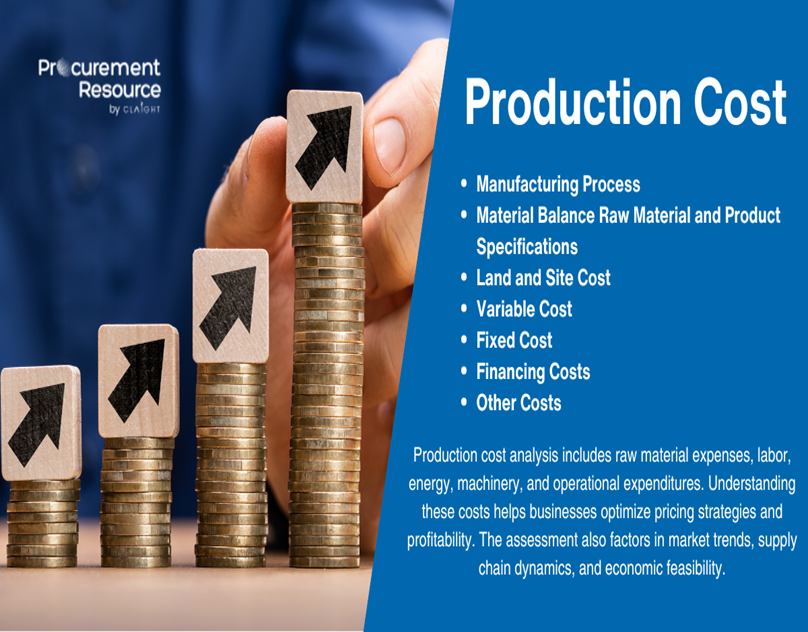Prepreg Production Cost Analysis Report by Procurement Resource

Procurement Resource, a leading authority in procurement intelligence and cost modeling, is pleased to publish its latest Prepreg Production Cost Report. This detailed analysis offers valuable insights for manufacturers, investors, and decision-makers looking to establish or optimize production of prepregs—a critical component in the aerospace, automotive, construction, electronics, and sports equipment industries.
This report serves as a comprehensive resource, offering a granular view of the production process, cost structures, raw material dynamics, technical requirements, and profitability indicators associated with prepreg manufacturing.
What is Prepreg?
Prepreg (short for “pre-impregnated composite fibers”) refers to reinforcement fibers such as carbon fiber, glass fiber, or aramid fiber that are pre-impregnated with a thermosetting resin matrix, typically epoxy, phenolic, or polyimide. These materials are partially cured during production, allowing them to remain tacky and flexible until final molding and full curing at the customer’s end.
Prepregs are widely appreciated for their high strength-to-weight ratio, dimensional stability, and customizable performance properties, making them essential in aerospace, high-performance automotive parts, wind energy, and electronic circuit boards (e.g., FR4 prepregs).
Strategic Value of the Prepreg Production Cost Report
Procurement Resource’s Prepreg Production Cost Report offers an in-depth view of the economic and technical landscape surrounding prepreg manufacturing. From cost optimization strategies and raw material sourcing to ROI analysis and regulatory considerations, the report helps businesses:
- Evaluate plant setup feasibility
- Understand input and processing costs
- Benchmark production efficiency
- Plan sustainable and scalable operations
Market Analysis: Growing Demand Across Industries
Key End-Use Segments
- Aerospace and Defense: For lightweight and durable structural parts (fuselage, wings, radomes)
- Automotive: Lightweight components to improve fuel efficiency and electric vehicle (EV) range
- Sports & Leisure: Bicycles, golf clubs, racquets, and protective gear
- Wind Energy: Structural blades for wind turbines
- Printed Circuit Boards (PCBs): As insulation layers in multi-layer board constructions
Regional Demand Dynamics
- North America and Europe lead in high-performance prepreg applications, especially in aerospace and defense.
- Asia-Pacific is rapidly expanding in the automotive, electronics, and wind energy sectors—particularly in China, South Korea, and Japan.
- Latin America and Middle East are emerging markets with increasing investments in renewable energy and infrastructure.
Raw Materials and Price Volatility
Prepreg production is heavily reliant on the quality and consistency of two major inputs:
- Reinforcing Fibers: Carbon, glass, or aramid fibers
- Resin Matrix: Epoxy, phenolic, or high-performance thermosetting polymers
The report includes detailed pricing trends and forecasts for:
- Carbon fiber tow and fabric
- Epoxy resin
- Catalysts, hardeners, and solvents
- Release films and liners
The volatility of petroleum-derived products (used in resin synthesis) and the cost-sensitive nature of carbon fiber manufacturing significantly influence prepreg production costs.
Production Process of Prepreg
The manufacturing process varies slightly based on the type of fiber and resin system, but the core process follows these steps:
1. Fiber Preparation
- Fibers (in the form of tows, fabrics, or mats) are aligned and tensioned to ensure uniform impregnation.
2. Resin Mixing
- The thermosetting resin is mixed with curing agents, tougheners, and additives under controlled conditions to achieve the desired viscosity and curing profile.
3. Impregnation
- The resin is applied to the fiber using either the hot melt process or solvent impregnation.
- Hot Melt Process: Resin film is heated and pressed onto the fiber.
- Solvent Process: Fibers are dipped in resin solution, followed by solvent evaporation.
4. B-staging (Partial Curing)
- The prepreg is partially cured (B-stage) so it becomes tacky yet manageable for further processing.
5. Cooling, Cutting, and Packaging
- The prepreg sheets are cooled, trimmed, and rolled or sheeted with release liners and backing films before packaging.
Machinery and Infrastructure Requirements
Core Equipment Includes:
- Fiber unwinding and tensioning systems
- Resin film preparation units
- Impregnation lines (resin bath, film applicators, or hot melt coating)
- Drying ovens or heated rollers for solvent removal/B-staging
- Cooling conveyors and slitters
- Storage freezers (to maintain prepreg shelf life)
Infrastructure Essentials:
- Temperature-controlled environments
- Dust-free cleanroom areas for aerospace-grade prepregs
- Quality control labs (DSC, rheology, fiber-volume fraction tests)
- Cold chain storage (-18°C to -23°C) for epoxy prepregs
Utility and Human Resource Requirements
Utilities Required:
- Electricity for line drives, resin mixers, and ovens
- Chilled water for resin temperature control
- Compressed air for automation
- Nitrogen (optional) for inerting during sensitive processes
Human Resource Needs:
- Process engineers (polymers and composites)
- Quality assurance specialists
- Equipment technicians and line operators
- Safety personnel (due to handling of volatile chemicals and fibers)
The report outlines headcount requirements for manual, semi-automated, and fully automated plants.
Financial Overview: Capital and Operating Cost Breakdown
Capital Investment Overview
Capital intensity depends on production capacity, product type (glass vs. carbon fiber), and automation level. Investment categories include:
- Equipment and machinery acquisition
- Resin handling and storage systems
- Refrigeration and cold storage infrastructure
- Facility construction and utilities setup
- Regulatory and environmental compliance
Cost models for small-batch specialty prepreg plants and high-volume industrial units are included.
Operating Cost Breakdown
Recurring operating costs include:
- Raw materials (up to 60–70% of total cost)
- Utilities and consumables
- Labor and quality control
- Maintenance and downtime losses
- Cold storage and transportation
Cost-saving strategies through in-house resin formulation or vertical integration with fiber suppliers are discussed in the report.
Profitability Metrics and ROI Evaluation
Return on Investment (ROI)
High-performance prepregs, especially carbon fiber-based ones, have strong profit potential due to premium pricing. ROI depends heavily on market niche (aerospace vs. industrial) and input sourcing efficiency.
Break-Even and Payback Period
The report includes:
- Detailed break-even analysis based on production volume and market pricing
- Cash flow models for different operational scales
- Sensitivity analysis for raw material price shocks
A well-optimized plant can expect to reach break-even in 3–5 years, depending on scale and end-market.
Sustainability and Compliance Considerations
The prepreg industry is under increasing pressure to improve environmental performance. The report includes:
- Solvent recovery systems for reduced VOC emissions
- Recycling initiatives for offcuts and expired prepregs
- Regulatory adherence to REACH, OSHA, EPA, and ISO 14001
Emerging trends such as bio-based resins, recyclable thermoplastic prepregs, and green composite initiatives are reshaping the sustainability landscape.
Why Choose Procurement Resource?
Procurement Resource delivers expert-driven production cost reports tailored to your business needs. Our Prepreg Production Cost Report is built on robust data modeling, real-time market intelligence, and expert insights across materials science, engineering, and industrial economics.
We empower clients to:
- Benchmark costs and identify savings
- Navigate supply chain complexities
- Optimize CAPEX and OPEX
- Make data-driven investment decisions
Request Your Free Sample Report
Whether you’re a start-up, established producer, or investor in composites manufacturing, the Prepreg Production Cost Report from Procurement Resource is your go-to decision-support tool.
Request your free sample report today: https://www.procurementresource.com/production-cost-report-store/prepreg/request-sample
Contact Information
Company Name: Procurement Resource
Contact Person: Ashish Sharma (Sales Representative)
Email: sales@procurementresource.com
Location: 30 North Gould Street, Sheridan, WY 82801, USA
Phone:
UK: +44 7537171117
USA: +1 307 363 1045
Asia-Pacific (APAC): +91 1203185500
Connect With Us Online:
https://twitter.com/procurementres
https://www.linkedin.com/company/procurement-resource-official



